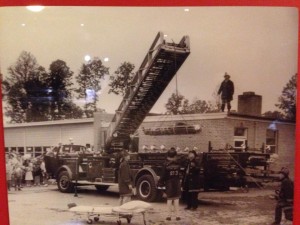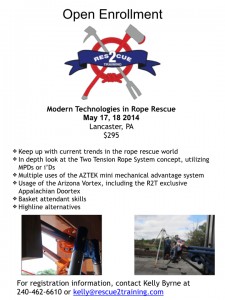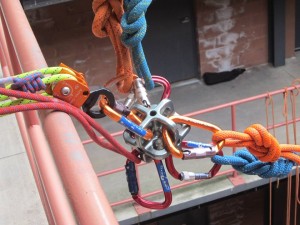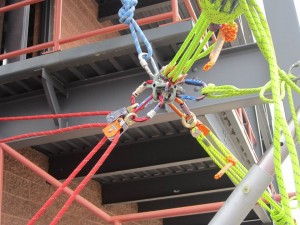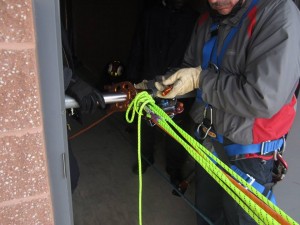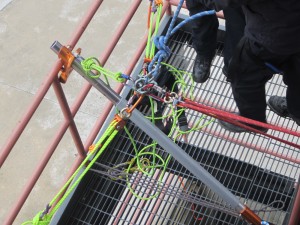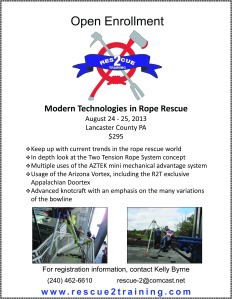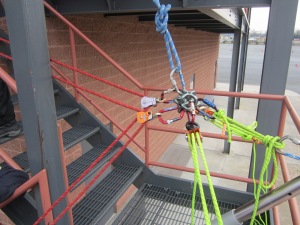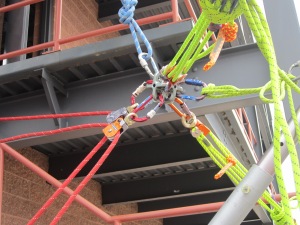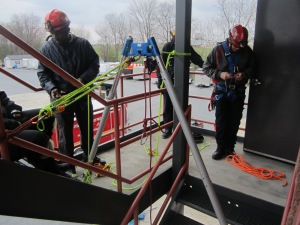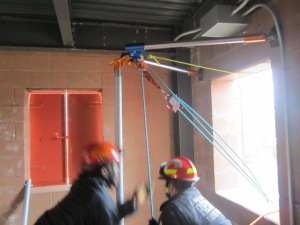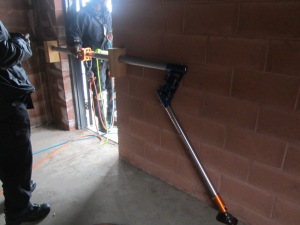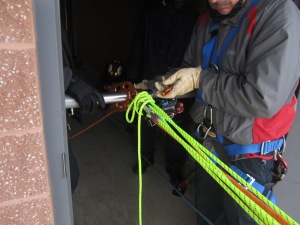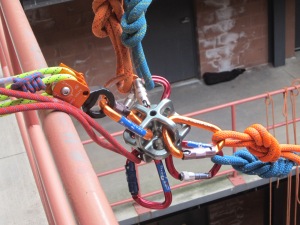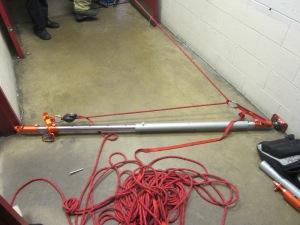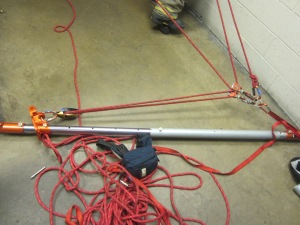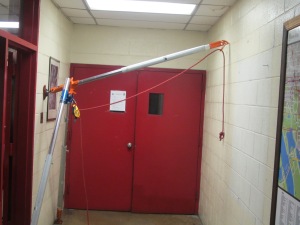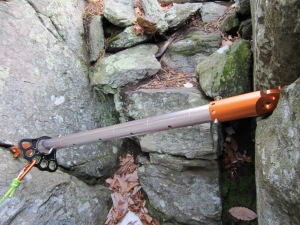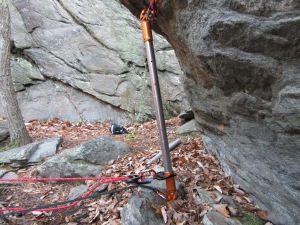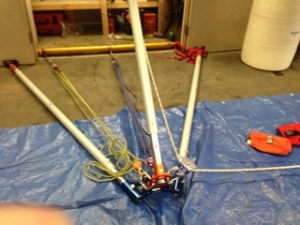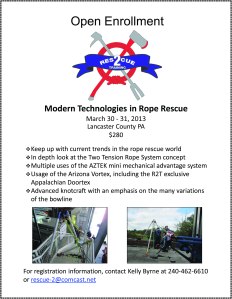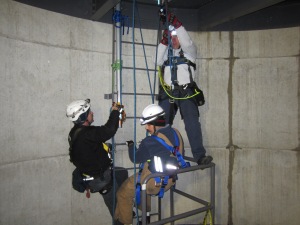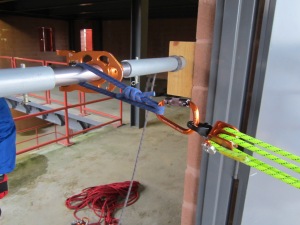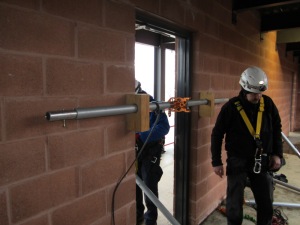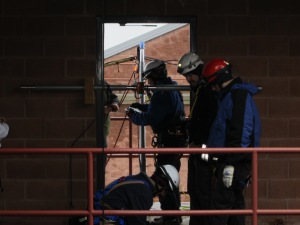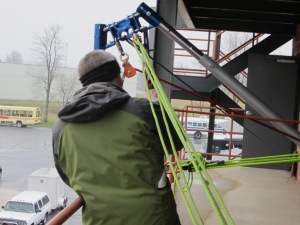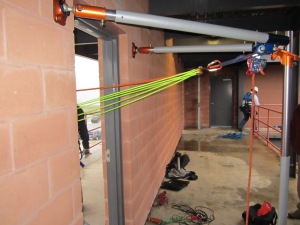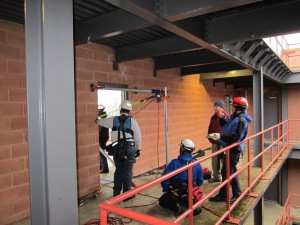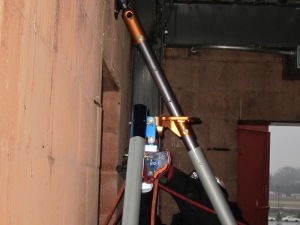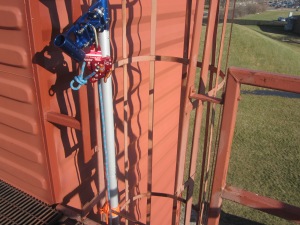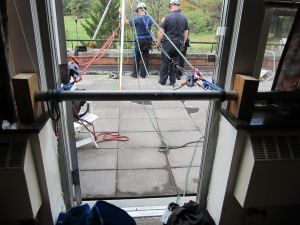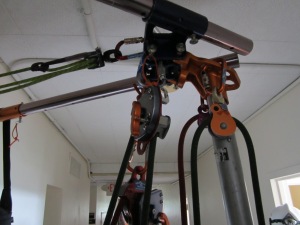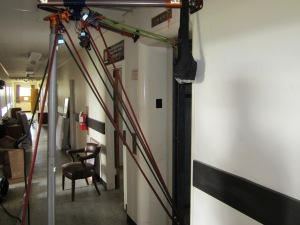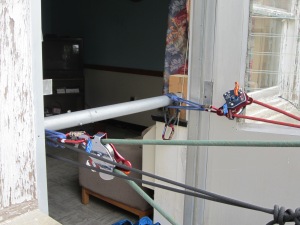Well, after finally getting off of a 3 month ambulance rotation on “The Soulcrusher”, I’m hoping to be back in the swing of regular posts here on the website. In the vein of getting back in the swing, here are a few unique things related to ropes and swings:
First up is the world’s most expensive swingset, probably the most portable, but you’ve got to pay for the privilege. I try to keep my hands on rope at least once a day; since this day was so beautiful, I decided to take out the ol’ Arizona Vortex and goof around a bit. Because there is no cliff in my yard (yet), I had to settle for a flat land configuration. I used my AZV, a couple of AZTEK’s, a bosun’s chair, and a 4 year old. Here’s the result:
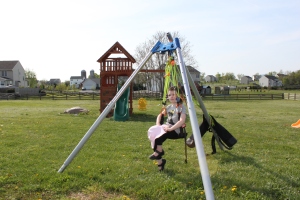
Of a more daring nature is the rope swing as pioneered by rock climber Dan Osman. While he ultimately died doing one of these jumps, it is pretty neat to watch the cajones this guy has to be able to do this stuff. He basically sets up a highline and, with a separate rope attached mid span, takes a free fall jump perpendicular to the track line. When the separate rope he is attached to comes tight, he goes for one hell of a long swing. I guess that, with the rope stretch and moveable mid span anchor, this is greater than a FF 2. If anybody agrees or disagrees, I’d love to know.
https://www.youtube.com/watch?v=si2j6IaKQGU
In stark contrast to Dan, I present the world’s slowest, yet safest, rope swing. Here is a shot of the rope offset that we set up in the last “Modern Technologies” class in Lancaster, PA. We had a main and belay coming from each side and connected to a Rock Exotica UFO to help keep all of the attachment points ultra clean. A CMC MPD was used on each side to control the main lines and and i’D and Petzl ASAP used for the belay lines.
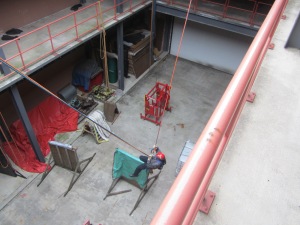
A close up of the UFO on Rick Croft’s harness:
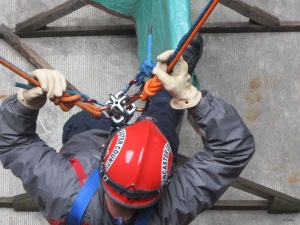
Stand by for more frequent postings again. Thanks to everyone who keeps checking in!

